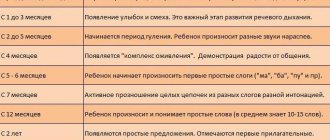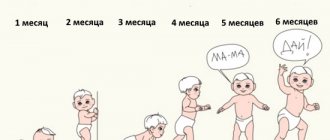Causes of slurred speech
Dysarthria
The term “dysarthria” itself is translated as “disorder of articulate pronunciation.” Slurred speech is observed in most types of dysarthric disorders: pseudobulbar, bulbar, extrapyramidal, cerebellar dysarthria. The cause of speech motor disorder is damage to the cranial nerves innervating the articulatory apparatus. Dysarthria can develop with the following nosologies:
- cerebral palsy;
- Parkinson's disease;
- strokes;
- traumatic brain injuries;
- neuroinfections;
- brain tumors;
- hepatic encephalopathy, etc.
Due to imprecise articulation and poor intelligibility for others, the oral speech of a dysarthric person is characterized by the metaphor “porridge in the mouth.” The pronunciation of almost all groups of sounds is significantly distorted: both vowels and consonants. Due to hypersalivation, characteristic squelching sounds appear, reducing the intelligibility of pronunciation.
Along with phonetics, speech prosody suffers. The voice is weak, fading, intermittent, hoarse with a nasal tint. Speech is monotonous, slow, there is no intonation expressiveness and emotional coloring of the statement. Breathing is shallow, arrhythmic, speech exhalation is weakened. All this makes the speech utterance poorly understood.
The quality of speech production deteriorates in proportion to the severity and prevalence of paresis and paralysis of the oral, vocal, and respiratory muscles. Taking into account the degree of innervation insufficiency, slurred speech can vary from mild “blurredness” with erased dysarthria to inarticulate speech and even its complete absence - anarthria - in severe forms.
Rhinolalia
With open rhinolalia, oral speech is extremely slurred. This is due to the total distortion of the sound image of the word. The lips practically do not participate in articulation, the tongue is pulled deeper into the oral cavity, the tip of the tongue cannot make a full connection with the incisors and alveoli. Snoring, clicking, hissing, whistling noises are mixed with the sounds of speech.
At the moment of phonation, excessive tension of the facial muscles is noted. The voice is muffled, unmodulated. Due to air leakage through the nose, hypernasality occurs. Pronunciation becomes slurred and unintelligible.
Dislocation of the lower jaw
With an anterior TMJ dislocation, the patient's mouth is slightly open and the chin is pushed forward. Attempts to close the jaws are sharply painful. There is drooling. The patient's speech is difficult or impossible, which is why he tries to communicate using gestures.
With a posterior dislocation of the lower jaw, on the contrary, mouth opening is limited. The chin moves posteriorly, the tongue moves deeper into the mouth, and there is no contact between the opposing teeth. Due to the inability to move the jaws, slurred speech is noted.
Edentia
Articulation disorders can be caused by the absence of several or all teeth. First of all, the clarity of pronunciation of front-lingual sounds is impaired. With edentia, speech becomes lisping and slurred. Diction suffers most severely in the absence of teeth on both jaws.
Edentia
Condition after dentures
Defects and unclear speech can be observed in dental patients at the stage of adaptation to dentures: bridges, removable, implant-supported. Normally, this time period takes from 10 to 30 days, its individual duration correlates with the physiological and psychological characteristics of the patient, and the quality of the manufactured orthopedic structures.
The adaptation stage is characterized by a feeling of the prosthesis as a foreign body, increased salivation, decreased chewing efficiency, gagging, and tension in the articulatory muscles. There are disturbances in diction, additional overtones (smacking, whistling), general slurring and unintelligibility of speech.
Hearing loss
Severe speech disorders affect congenitally deaf and early deafened patients. With hearing loss, both the understanding of speech and its pronunciation are impaired. The structure of the word is distorted due to the loss of sounds and entire syllables, approximate articulation, and the impossibility of auditory control. Slurred speech is expressed in its monotony, deafness, understatement of words, and a large number of ungrammatisms.
Peritonsillar abscess
Patients with phlegmonous tonsillitis in the abscess stage complain of fever, excruciating pain when swallowing saliva, taking water and food, difficulty opening the mouth, and drooling. The inflammatory tumor spreads to the soft palate, palatine arches and uvula, as a result of which the mobility of the articulatory organs is impaired. Due to severe swelling in the oral cavity and lockjaw, speech becomes slurred and the voice becomes nasal. All symptoms gradually regress after opening the abscess.
Alcohol intoxication
Inarticulateness and slurred speech are typical for persons under the influence of alcohol. With a mild degree of intoxication, the semantic side of the statement is more disrupted - speech becomes meaningless, primitive, and confusing.
With severe alcohol intoxication, the articulation of labial and anterior lingual sounds becomes difficult. A person distorts words, places stress incorrectly, “swallows” sounds and syllables. The pace of speech slows down, hesitations and repetitions of words appear. Slurred speech disappears as you sober up.
Binswanger's disease
The pathology is named after its discoverer and is subcortical atherosclerotic encephalopathy. Develops as a result of damage to small cerebral vessels and is a fairly common form of dementia: about 1/3 of all dementors.
It has been established that arterial hypertension plays a major role in the development of pathology. It was observed in 80% of patients with this form. Most often, the disease starts after 50 years and begins suddenly. The first signs of it may be a transient disturbance of cerebral circulation, accompanied by sudden paralysis, which, however, also suddenly disappears. Other signs include small strokes and parkinsonism. A magnetic gait is observed when the legs seem to stick to the floor.
Emotional incontinence appears in the form of sudden laughter or crying, speech is impaired, and control over vital functions (for example, urination) is lost. Problems with memory and thinking appear already at the beginning of the disease.
The symptoms of the pathology are quite varied. After all, the process causes extensive damage to brain tissue with ischemia, destruction of nerve cell processes, and demyelination of nerve fibers. The process is accompanied by steady progression, although cases of persistent remission are possible.
Diagnostics
The tactics of diagnostic examination depend on the suspected cause of slurred speech. The algorithm consists of medical and pedagogical aspects: the first allows for nosological diagnosis, the second - to establish the leading mechanism and degree of speech dysfunction:
- Neurological diagnostics.
Indicated for patients with dysarthric disorders. Cerebral MRI is performed to visualize focal brain lesions. To assess the severity of paralysis and paresis of articulatory muscles, electrophysiological studies are used: ENG, EMG. - Dental examination.
Required for persons with edentia, jaw dislocation, or poor-quality prosthetics. Diagnostics may include X-ray of the TMJ, orthopantomography, CT scan of the jaws. To make prosthetics, impressions are made and diagnostic models are cast. - Audiological examination.
If slurred speech is due to hearing loss, an audiogram, otoacoustic emissions, and auditory recordings are performed. An audiologist consults the patient with the test results. - Examination of the pharynx.
During pharyngoscopy, the peritonsillar abscess is visualized as a spherical, fluctuating formation. The mucous membrane is hyperemic, and pus can be seen through it in the place of greatest bulging. Sometimes a test puncture of the abscess is performed for differential purposes. - Speech therapy examination.
Assessment of the state of oral speech is necessary for dysarthria and rhinolalia. The speech therapist identifies articulatory difficulties, defects in sound pronunciation (substitutions, distortions, omissions), agrammatisms, and determines the coherence and intelligibility of speech.
Speech therapy classes
Results
Voice and speech problems can cause older adults to withdraw from social interactions. This leads to depression and deterioration in overall health. Communication is a basic human need.
Voice changes can occur not only due to aging of the body, but also due to illness. Therefore, it is important to first contact a therapist and ENT specialist for diagnosis and treatment. If the cause is not illness, the voice can be “trained” and supported with simple exercises and recommendations.
Treatment
Medical stage
The content of medical care depends on the underlying pathology that led to slurred speech. Both therapeutic and surgical approaches, rehabilitation and recovery measures are used:
- Neurological treatment.
Neurosurgical interventions are required for patients with cerebral tumors, hematomas, and skull fractures. For vascular and neurodegenerative pathologies, long-term (often lifelong) drug therapy is carried out. Neuropsychological correction is carried out according to indications. - Dental treatment.
Indicated for maxillofacial defects and orthopedic problems. Primary dentures or adjustment of previously installed dentures, dental implantation are performed. In case of traumatic displacement of the articular surfaces, the TMJ dislocation is reduced. Children with facial clefts undergo surgical treatment - cheiloplasty, uranoplasty. - Audiological treatment.
After establishing the type and degree of hearing loss, the optimal hearing aid method is selected. In case of sensorineural hearing loss, the child needs to select a hearing aid; in case of significant hearing loss (IV degree hearing loss, deafness) - cochlear implantation. - Treatment of ENT pathology.
For phlegmonous sore throat, antibiotic therapy, gargling with antiseptics, and physiotherapy for the submandibular area are prescribed. When the peritonsillar abscess matures, it is surgically opened. - Medical rehabilitation.
It is an essential component of complex therapy. Includes physical therapy classes, mechanotherapy, kinesitherapy, massage. In some cases, patients require sensory psychostimulation, selection of individual orthopedic devices, and medical and social support.
Speech therapy stage
The content of speech therapy sessions and the methods used vary depending on the structure of the speech defect. However, in all cases, to overcome slurred speech, it is necessary to develop articulatory motor skills and improve pronunciation skills. For this purpose, the following methods are used in speech therapy practice:
- breathing and articulation exercises;
- speech therapy massage;
- myofunctional correction;
- speech therapy taping;
- neuromuscular stimulation using the VocaStim device.
As part of speech rehabilitation after hearing loss, classes with a teacher of the deaf are recommended. During the adaptation period, people with dentures are advised to talk more, read slowly and count out loud, and practice the pronunciation of “difficult” sounds and sound combinations. With systematic practice, slurred speech gradually decreases, and in many cases clear, intelligible pronunciation is achieved.
General groups of symptoms
The disease distinguishes two groups of disorders: cognitive and neurological.
Cognitive disorders come to the fore, that is, regression of cognitive and thinking functions.
At the initial stage of the disease, memory is primarily affected. At first these are subtle changes. A person forgets some events, individual names and dates, and cannot find the right word to express a thought. The process of assimilation of new knowledge worsens, and it becomes increasingly difficult for the patient to remember and analyze new information.
Gradually, amnestic symptoms increase. The person does not grasp the meaning of what was said, and it becomes more and more difficult to find words. Because of this, his speech becomes meager, his sentences are short and monosyllabic. If talkativeness manifests itself, then it is incoherent; letters in words can be rearranged, words can be replaced. The person himself does not understand the meaning of what he said. Speech impairment leads to difficulties with writing and reading.
Amnesia occurs in the following forms:
- progressive - the patient begins to forget what happened to him recently, and then earlier events;
- fixation – inability to perceive, analyze, store new material, current events. Consciousness in such patients is preserved; they remember well the events of the past, but cannot remember what they talked about with the person 5 minutes ago. Having bought milk, brought it home and put it in the refrigerator, a few minutes later they are going to the store again to buy it, since they have already forgotten that they purchased it;
- Paramnesia is false memories when the patient supplements reality with unreal events. For example, he may pass off as reality events read in a book or seen in a film, and believe that this actually happened to him. Or he simply fantasizes, passing off as reality what did not happen. It is possible that events may shift in time, that is, what happened many years ago is perceived by a person as having happened yesterday.
In addition to memory, other cognitive functions are affected in vascular dementia. Attention is scattered, it is impossible to fix it for a long time. Perception is disrupted. Thinking becomes inflexible. It is difficult to switch from one activity to another.
Often, as the process progresses, patients develop a symptom such as Korsakoff's syndrome, named after the doctor who first described it. It combines several symptoms. First of all, this is fixation amnesia. As already mentioned, the patient does not remember current events, but retains memory of the past. In this regard, he loses orientation in time and space. So-called amnestic disorientation develops.
There are also various variations of paramnesia: doubts about the occurrence of a particular event, their displacement in time, a mixture of fictional and true events.
Against this background, a person gets lost in an unfamiliar environment. He doesn't understand where he is. While in the hospital, he cannot find his bed, but in a familiar environment, at home, he finds his way around perfectly.
Symptoms and classification
Damage to various areas of the brain responsible for speech formation gives characteristic symptoms of aphasia:
- with sensory aphasia, damage to the temporal lobe of the cerebral cortex and nearby pathways is noted. The main symptom of aphasia in this case is the difficulty of auditory perception of one’s own speech, when the patient does not understand what he is saying. The speech is incoherent, verbose and clearly redundant, indicating the patient’s desire to convey his thoughts to others;
- with motor aphasia, damage is localized in the frontal part and the pathways connecting this lobe with other parts of the cerebral cortex. While the patient remains conscious, he cannot begin to speak and is unable to form correct speech. It is abrupt and meager, but the patient understands the words addressed to him by those around him;
- in semantic aphasia, damage is often localized in the parietal cortex and nearby nerve endings. The disease is characterized by difficulty understanding complex concepts and the inability to explain them against the backdrop of the patient’s ability to conduct a full dialogue;
- amnestic aphasia is associated with damage to the internal structure of the temporal lobes of the brain. The patient retains the ability to conduct a dialogue, but finds it difficult to name the object independently and can only do this with a prompt.
general characteristics
Retardation is a slowness of mental and physiological processes.
In the scientific community, the terms “bradypsychism” and “bradypsychia” are used to denote it. The most typical external signs are slow reactions, protracted speech, inability to engage in joint activities or communication that proceed at a normal pace. Inhibited people often remain alone, seem unsociable, withdrawn for no reason. The most severe variants of the disorder are observed with apathy and stupor, when patients do not respond to anything. There are three types of inhibition: ideational, motor and complex. The symptom is called ideatorial when slowness is most pronounced in speech and thinking. People show moderate or slightly weakened motor activity, but when trying to carry on a conversation, inhibition occurs - they do not have time to follow the progress of the conversation, track the change in topic, or answer the questions posed. Others get the impression that the thought process and speaking take a lot of energy from a person.
Motor retardation is manifested to a greater extent by slowing down movements. It is characterized by physical weakness, relaxed posture, and incoordination. People constantly feel the desire to lean on something stable, sit down or lie down. The decrease in speech rate is mild; communication difficulties arise only when conducting an intellectually complex or emotional conversation. With complex retardation, the mental and motor spheres suffer: patients speak quietly, with long pauses, move slowly or remain practically motionless.








